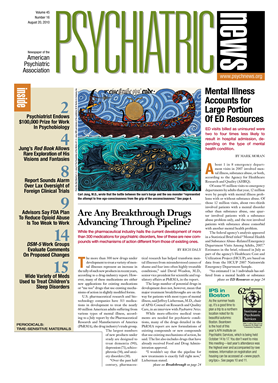Little oversight of foreign clinical trial sites and patients who serve as subjects is conducted by the Food and Drug Administration (FDA), despite the growing dominance of overseas studies to support new drug applications for U.S. regulatory approval, according to a federal watchdog agency.
A June report from the inspector general of the Department of Health and Human Services (HHS) found that less than 1 percent of foreign drug-trial sites that provided the data used in seeking U.S. drug approval in Fiscal 2008 had received an FDA inspection. That low inspection rate came despite the fact that more than 75 percent of patients participating in these studies were located at overseas sites, according to the report, submitted to Congress by HHS Inspector General Daniel Levinson.
The FDA is charged with reviewing clinical trial design, marketing materials, and clinical trial sites to ensure patients' safety and that the trial data collected are “accurate and reliable,” according to the HHS investigators.
The HHS report reviewed data from trials submitted to support approval for 121 drugs that were already or eventually approved by the FDA. In Fiscal 2008, the HHS investigators found that the FDA inspected 1.9 percent of domestic clinical trial sites and 0.7 percent of foreign clinical trial sites. The lower overseas inspection rate coincided with a finding that the large majority—78 percent—of clinical trial subjects took part in overseas locations.
“As sponsors increase the number of foreign clinical trials in support of FDA marketing applications, the agency's current method of using inspections to ensure human subject protections and data validity is becoming increasingly strained,” Levinson said in his report.
The inspector general's analysis found that the FDA was 16 times more likely to inspect a clinical investigator at a domestic site than at a foreign site. Fifty-four percent of trial sites were foreign.
The report's authors noted that they were told by FDA staff that foreign trial site inspections were hampered by logistical challenges, including the need for work visas and translators, as well as covering the expensive travel costs.
The study found that the FDA was most likely to conduct foreign inspections when the trial site was especially large or when the drug had not yet received U.S. approval for any indication.
Jeffrey Lieberman, M.D., chair of APA's Council on Research and Quality Care, said the low rate of inspections overseas was “a worrisome finding.”
“The FDA is in a tough position because it has to carry out [an inspection] mandate at a greater number of sites amid a higher volume of new drug applications from around the world,” Lieberman told Psychiatric News.
The report urged the FDA to address the inspection situation by increasing cooperation with similar agencies in other countries to share inspection findings and future plans. The inspector general also recommended that the FDA commit to increasing its own inspections of foreign trial sites.
Additionally, the HHS inspector's report urged the FDA to require that applicants submit trial data in a standardized electronic format. That recommendation stemmed from the finding of his investigators that the FDA was unable to locate some trial data due to missing files and incomplete submissions from drug companies.
Joshua Sharfstein, M.D., the FDA's deputy commissioner, in a memo published with the report, agreed with the recommendations and said the agency was addressing each of the problems identified, including targeting specific countries for inspection. That response likely stemmed from the finding of the HHS report that FDA inspectors never visited trial sites in seven Latin American countries that accounted for about 40,000 study participants. The report found 78 percent of the 299,701 participants in drug trials submitted with FDA applications approved in 2008 were from outside the United States, as were 54 percent of the 11,944 study sites.
“FDA agrees with the [inspector general's] recommendation to consider alternate models of oversight of clinical trials to ensure data quality and safety of human subjects,” Sharfstein said.
Lieberman called for more funding to increase the number of FDA inspections but also saw a need for a legislative overhaul that would require “phase 4” studies of new drugs after their approval. Such studies—rarely performed now—would identify safety or efficacy problems among a much wider patient population than those included in preapproval studies.
Critics of the FDA's oversight efforts worried that the low level of overseas site inspections left those test subjects vulnerable to abuse and made the data they produced unreliable.
“As a result, the quality of the data used by the FDA as a basis for approving the drugs being studied may well be flawed, resulting in dangerous, incorrect decisions to approve drugs, jeopardizing the health of people in this country and elsewhere,” said Sidney Wolfe, M.D., director of the advocacy organization Public Citizen's Health Research Group, in a written statement about the report. “Massive marketed use of drugs that possibly should not have been approved extends the dangers beyond the subjects of the clinical trials to the general public.”
The most popular overseas clinical trial location was Western Europe, which accounted for nearly 60 percent of foreign sites and participants. However, when study sponsors sought large numbers of participants, they were most likely to go to Central and South America, where the average number of participants per trial site was about 130, compared with fewer than 40 in Western Europe studies.
To improve the quality of overseas drug trials, the Pharmaceutical Research and Manufacturers of America has conducted educational seminars and symposia—sometimes in conjunction with the FDA—in other countries to educate potential clinical trial principal investigators about “good clinical practices,” ethics oversight by outside review boards, and the need to meet high standards for data quality.
